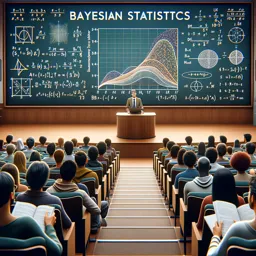Introduction
Probability distributions are at the heart of statistical analysis in the world of data science. Whether predicting customer behavior, modeling uncertainties, or interpreting machine learning outputs, understanding how data is distributed allows data scientists to make precise and insightful decisions. This article will explore the foundational role of probability distributions in data science, introduce common types, and illustrate practical applications relevant for beginners and aspiring professionals.
What Are Probability Distributions?
A probability distribution is a function that describes the likelihood of possible outcomes in a random experiment. It provides a mathematically structured way to understand how frequently different values occur. Probability distributions are essential for modeling real-world phenomena and for the statistical inferences that follow.
Types of Probability Distributions
Discrete Probability Distributions
- Bernoulli Distribution: Models binary outcomes, such as success/failure.
- Binomial Distribution: Represents the number of successes in a fixed number of trials.
- Poisson Distribution: Predicts the number of events occurring in a fixed period of time or space.
Continuous Probability Distributions
- Normal (Gaussian) Distribution: The well-known “bell curve,” common in natural and social phenomena.
- Uniform Distribution: Every value in an interval has equal probability.
- Exponential Distribution: Models the time between independent events.
Why Probability Distributions Matter in Data Science
Distributions allow data scientists to:
- Model real-world processes: Choosing the correct distribution simulates behaviors such as website visits, market trends, or product defects.
- Make predictions: For example, knowing that sales data follows a normal distribution helps in forecasting future sales with confidence.
- Enable hypothesis testing: Comparing observed data against expected distributions informs whether patterns are statistically significant.
Visualizing Distributions
One powerful aspect of probability distributions is their visual representation. Histograms and probability density/mass functions help to:
- Spot patterns or anomalies in the data
- Compare actual data versus theoretical models
- Facilitate communication of findings to stakeholders
Practical Applications
- Anomaly Detection: Identify outliers in manufacturing or network traffic by observing deviations from expected distributions.
- Natural Language Processing: Use multinomial distributions to model word frequencies in documents.
- Risk Analysis: Model financial uncertainties using appropriate probability curves.
Conclusion
Probability distributions are indispensable in data science for modeling, analysis, and interpretation. By mastering distributions, you lay the groundwork for more advanced statistical and machine learning techniques. Make sure to experiment with real datasets and visualize their distributions to gain deeper, hands-on insights!

























